Literacy Assessment Tool: Co-Creating Assessments
Why Co-Created Rubrics?
I truly believe that when you involve students in the assessment and reporting process they will feel more motivated to be successful because they were a part of it. Reflecting on my own school experience, I had one teacher who co-created a rubric with my class for our final English Language Arts presentations. I loved it because I felt that I thoroughly understood what I needed to do to be successful. Research states that “When students are involved in the classroom assessment process, they become more engaged in learning” (Davies, 2020, p. 55). Below I have added a photo of the textbook we are using currently in my assessment course called “Making Classroom Assessment Work-4th Edition” by Anne Davies, Ph.D, where I learned HOW to facilitate co-constructed rubrics.

Steps of HOW to co-create assessments from Anne Davies:
- Brainstorm a list of ideas (Davies, 2020, p. 56).
- Sort and group the ideas (Davies, 2020, p. 56).
- Make and post a T-chart (Davies, 2020, p. 56).
- Use and revise as you learn more (Davies, 2020, p. 56).
Below are photos from the text to provide an example of how to complete each step:
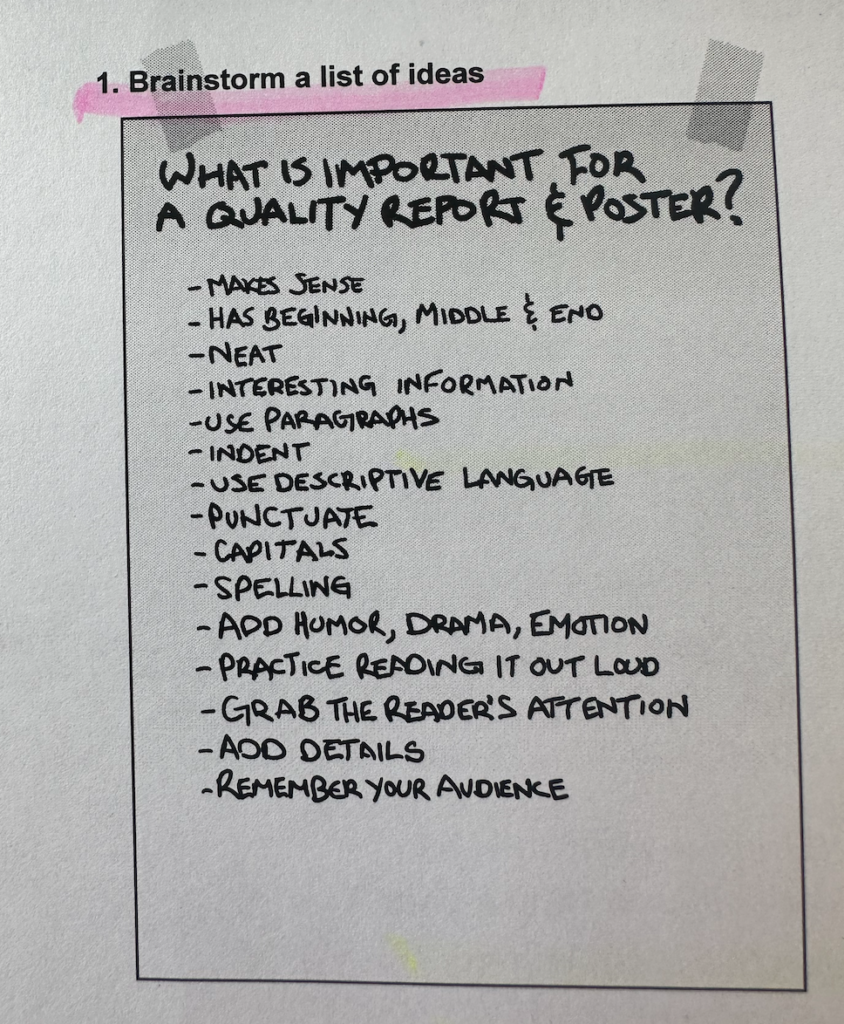


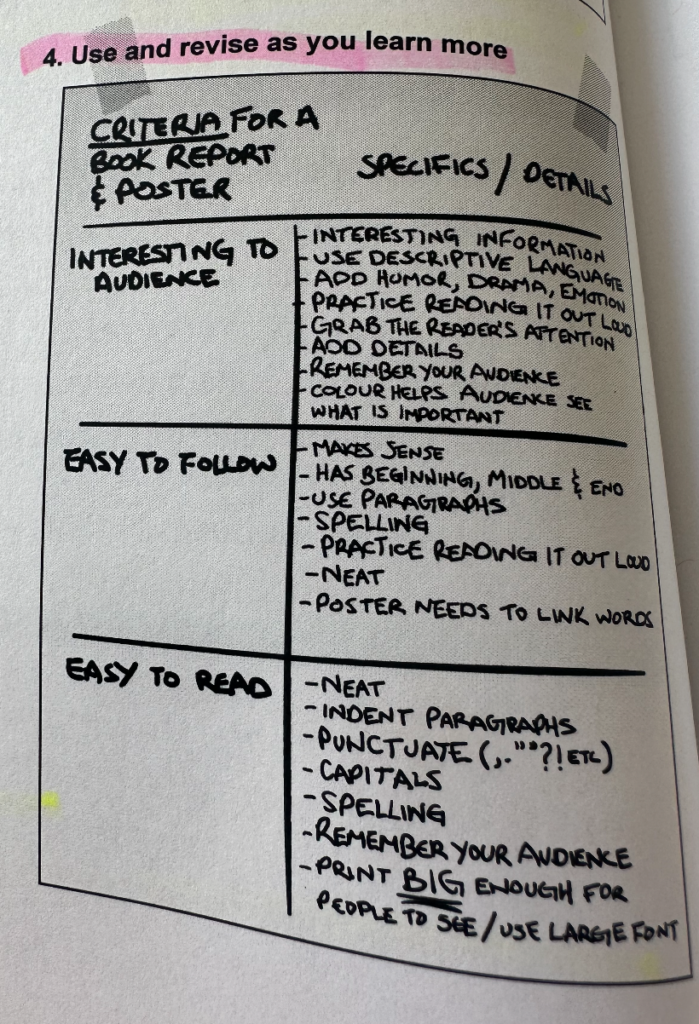
Grade level?
I truly believe that this literacy assessment tool can be used in any grade K-12 and beyond. It could be used in many different contexts for example when making classroom rules all the way to find projects. For my grade 3 English Language Arts/ cross-curricular unit plan I have decided to use this assessment strategy as a summative assessment. I plan to have students choose their favourite book from Turtle Island Voices and create a Story Vine to retell the story orally. Students will have input of what is important to include and I will guide this to ensure it matches the curriculum (ie. elements of a story, Title/author, flows in chronological order, cognicent of volume, pace and tone ect…) [BC Curriculum, 2024]. I have adapted this from a rubric to a checklist for my grade 3 class and below are two photos of examples of what we would co-create together. Which one do you think would work best?
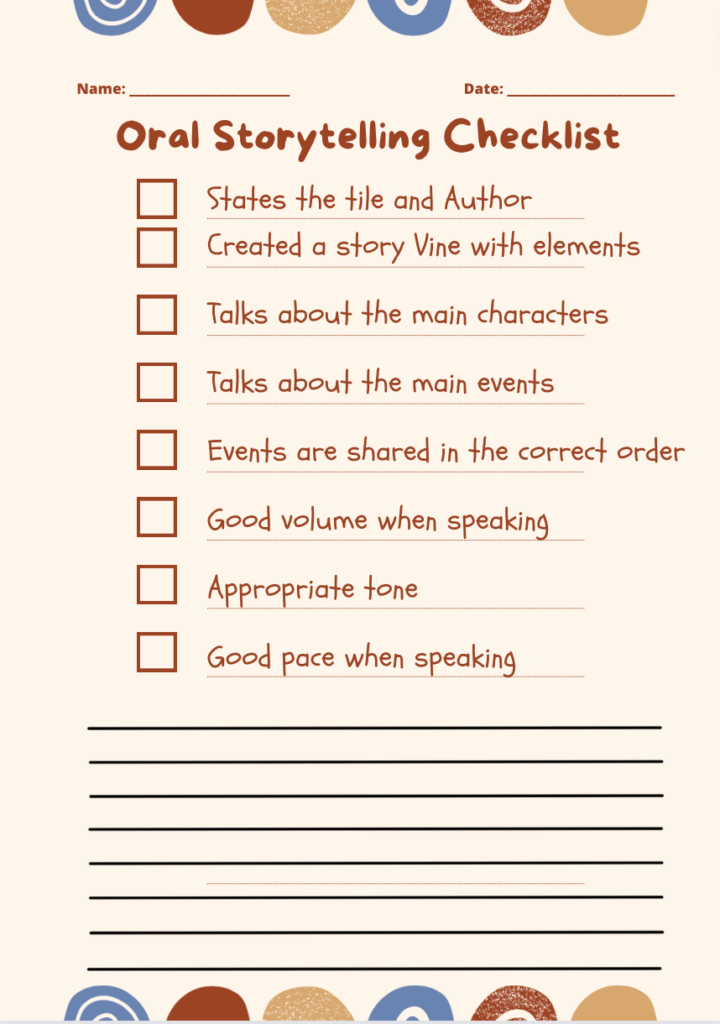

When? Although this strategy can be used for summative or formative assessment, I feel that it best suits a summative assessment. The reason I say this is because it takes time to go through the process of creating the rubric collaboratively so it is better to use this for a big project that will take multiple days.
Why? Below I have shared a link to a video with Anne Davies that goes through a “clapping activity” that demonstrates the importance of involving students in their assessment process. Although the video is 30 minutes long, it is very powerful and I very much recommend it! Below the link is the description of the activity in the video written out (Resource from Judi Poole).
Link: https://vimeo.com/351056132/1f1bd343e7?share=copy
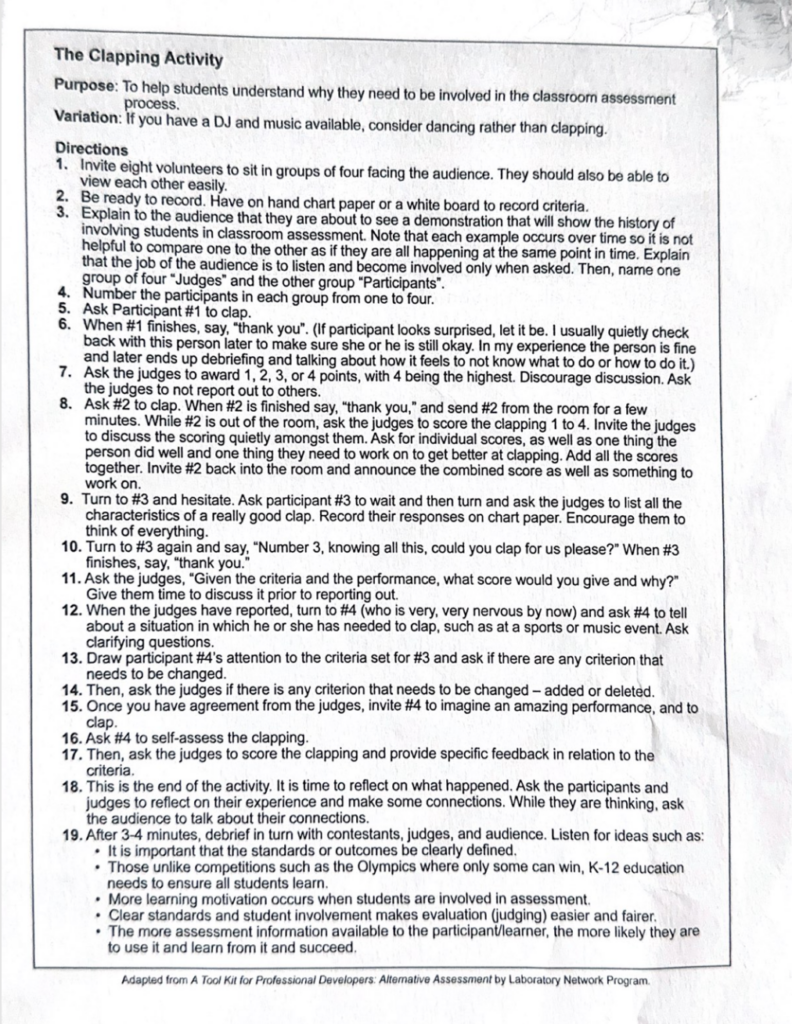
B.C K-12 Student Reporting Policy
The British Columbia K-12 Student Reporting Policy provides information on assessment practices (assessment as, for, of learning), ways and when teachers need to communicate student progress and support for the reporting process.
I decided to try using the Magic School AI Text Summarizer to provide the following points about the document:
- The document outlines guidelines for communicating student learning in kindergarten to grade 12 in British Columbia.
- It emphasizes the importance of clear, meaningful and timely communication of student progress.
- The guidelines aim to support student well-being, engagement, and continuous growth.
- Educators are encouraged to use multiple forms of assessment to inform communication with students and parents.
- The document highlights the need for ongoing communication between teachers, students, and parents.
- It stresses that assessment practices should be equitable and transparent to all stakeholders.
- The guidelines include information on reporting timelines and grading practices.
- It provides recommendations on reporting.
Another way to see this document summarized is through the following link: https://www2.gov.bc.ca/assets/gov/education/administration/kindergarten-to-grade-12/criteria-and-considerations-for-written-reports-for-educators.pdf
Below are the key takeaways I took from the K-12 Student Reporting Policy:
Types of Reporting: Written, Informal, and one summary.
Frequency of Reporting (5 learning updates total):
“Two written Learning Updates must be provided in writing, and can include either digital or printed documents” (K-12 Student Reporting Policy, 2024, p. 24). Below is an image from the document that will support me as a future teacher to ensure I am meeting the requirements for the written learning updates (Report Cards):

“Two informal Learning Updates can be provided in a variety of formats, including conferences, in-person or virtual discussions, telephone calls, e-mails, portfolio entries, or written summaries” (K-12 Student Reporting Policy, 2024, p. 24). I plan to have an open house one evening near the beginning and end of the year and use Seesaw throughout the year so caregivers can continually see their child’s growth.
“One Summary of Learning at the end of the school year must be provided in writing, and can include either digital or printed documents” (K-12 Student Reporting Policy, 2024, p. 24).
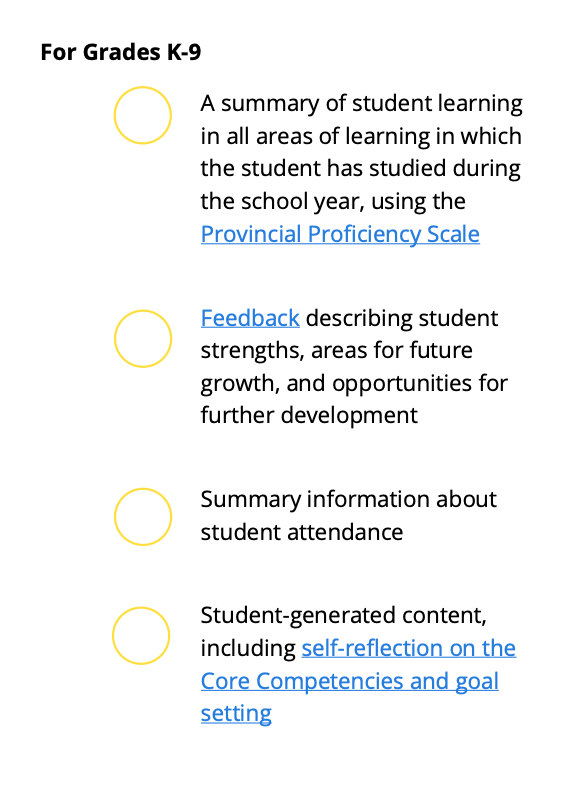
Summary Report (ie. Report Cards): I found the K-12 Student Reporting Policy helpful because it has an example report card on pages 46-48 to guide my practice (2024).
Writing Descriptive Feedback:
I learned two helpful things from this section of the document in regard to writing descriptive feedback:
- Use plain language (ie. most instead of “the majority of”).
- This document provides sentence starters that work well with each designation of the proficiency scale to use in your report card writing:
Triangulation of assessments: This means we need to collect observations, conversations, and products over time. These three different assessment approaches ensure that the teacher has the best big picture to be able to assess their students to the best of their ability and the most fairly. Below is a video showing how one teacher has done this:
Self-Reflection of the Core-Competencies:
Lastly, it is critical that teachers include student-self reflections on the core competencies in their reporting. Below is an example of one I have created as an example for a grade three student:

I was initially nervous of how I would make the self-assessment; however, once looking at the BC Curriculum Core Competencies and realizing how the profiles break them down into digestible language I was relieved. Often they were even written in “I can” statements which makes it very easy to create a self-assessment directly from the curriculum.
Attendance: It is mandated to include information about student attendance on their report card.
BC Proficiency Scale:
The proficiency scale is used in British Columbia in grades K-9. Each student in BC falls within this scale unless the teacher has insufficient evidence of learning in which case they can report (IE). The proficiency scale is rated from emerging to extending as follows:

Link to the document: https://www2.gov.bc.ca/assets/gov/education/administration/kindergarten-to-grade-12/unpacking-the-proficency-scale-support-for-educators.pdf
Why the shift from grades to a proficiency scale?
- “Views learning as ongoing, rather than signalling that learning is done” (Unpacking the proficiency scale, 2024, p. 1).
- “Values growth and most recent evidence of learning” (Unpacking the proficiency scale, 2024, p. 1).
- “Provides feedback, to both students and their parents and caregivers, on where the student is in their learning and how to help them move forward” (Unpacking the proficiency scale, 2024, p. 1).
- “Supports lifelong learning by shifting the focus from getting marks to developing competencies” (Unpacking the proficiency scale, 2024, p. 1).
- “Maintains high provincial standards, helping all students attain proficiency in their learning” (Unpacking the proficiency scale, 2024, p. 1).
- “Is inclusive of all learners, focusing on strengths and next steps for each individual student” (Unpacking the proficiency scale, 2024, p. 1).
How do teachers use the proficiency scale?
Teachers use the proficiency scale to evaluate student progress against the BC curriculum learning standards. See the below steps which help teachers plan their teaching to support students to fulfill their learning goals successfully and reflect on where they are to support their next steps:

Example of a Report Card Comment for Literacy
Below is an example of a report card comment I created for English Language Arts based on the BC proficiency scale and student reporting policy in my assessment course (student name and ideas are made up):
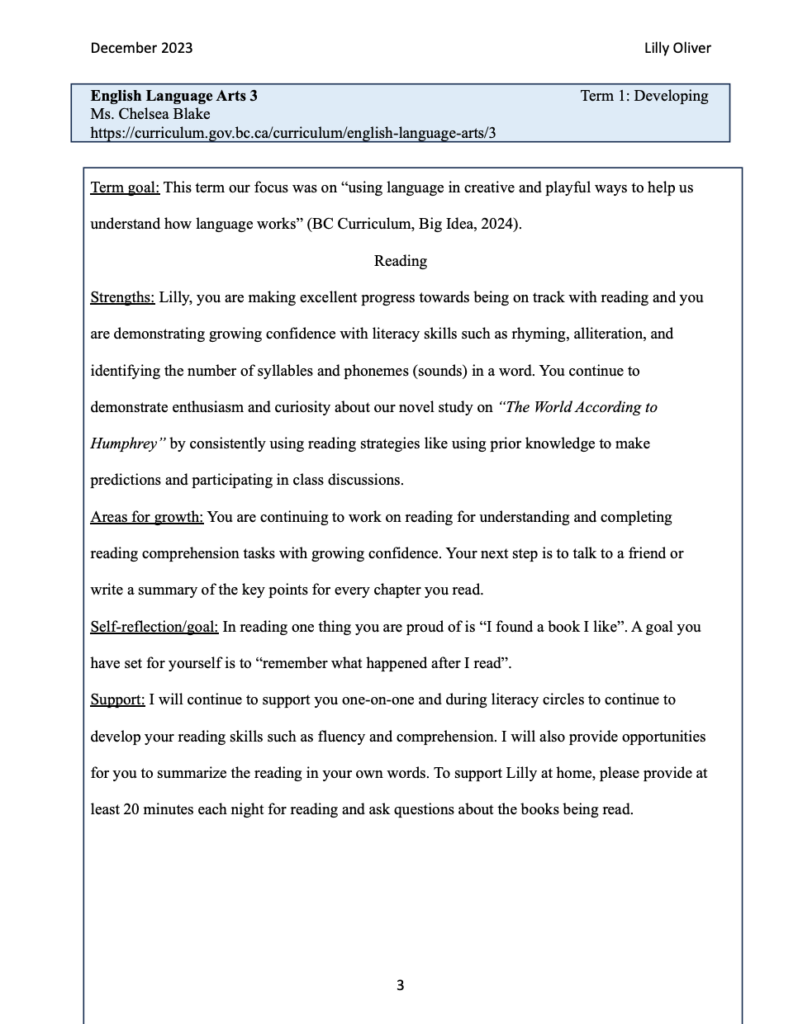
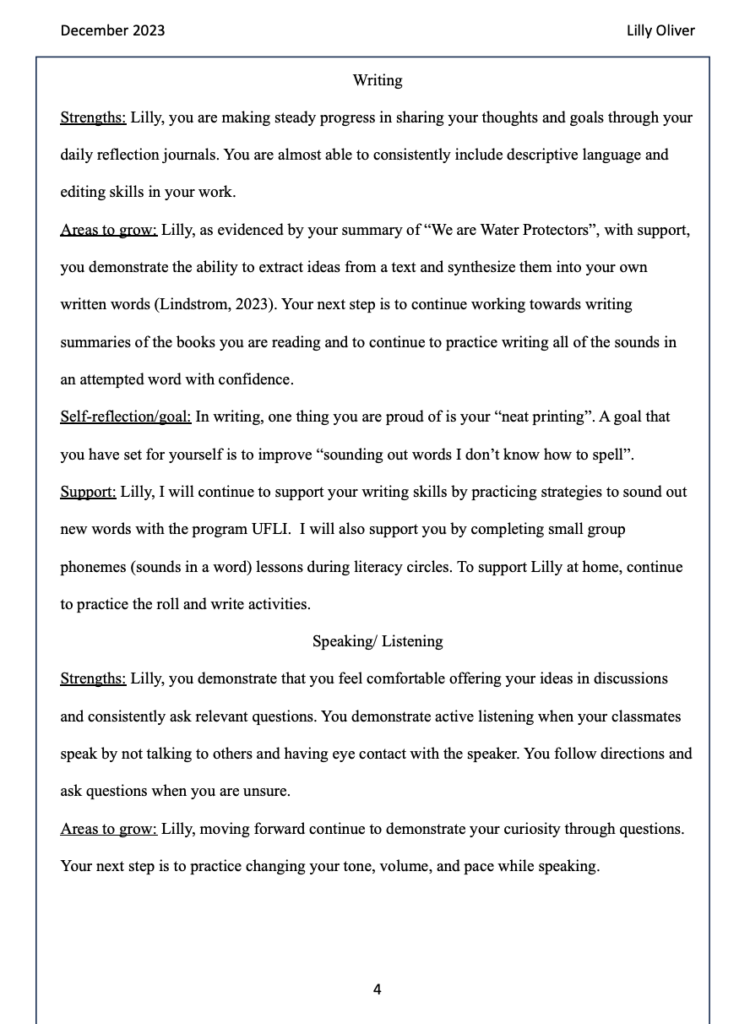
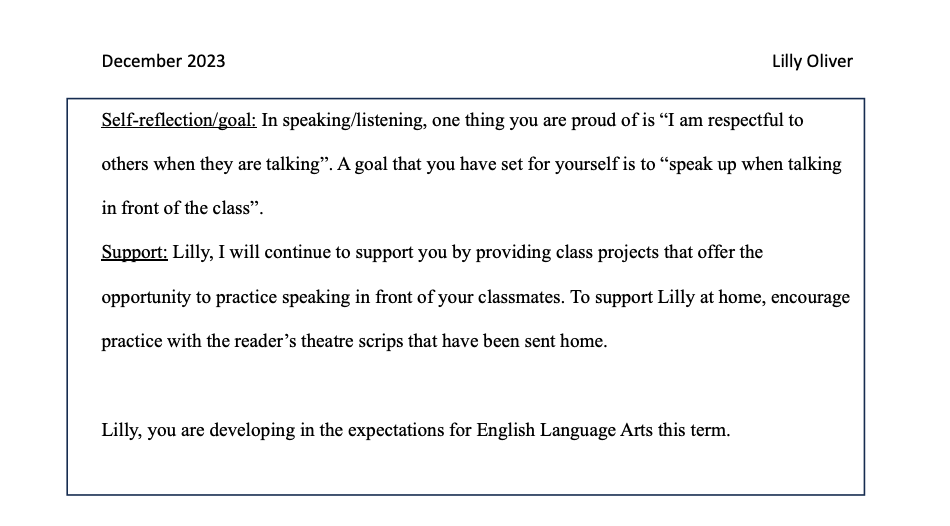
My peers Morgan Tank and Emily Sartorel wrote a beautifully done report card comment that I want to keep for reference in the future. They gave me consent to add it to this blog post so that I can refer to it in my future practice:
“Suzy is developing in term 2 for English Language Arts. Suzy continues to gain confidence in our Guided Reading groups and works well and contributes towards the weekly activities that take place in those groups. She has been working on spelling lists for short and long vowel sounds. I encourage Suzy to continue working on her at-home reading practice and the spelling lists that get sent home on Fridays. For the month of February we had a read-a-thon and I was impressed by Suzy’s courage to read beyond her comfort level. She really gravitates towards animal books. Moving forward I encourage Suzy to practice sounding out words, use her expression when reading and to slow down. I am very proud of how far Suzy has come, and I look forward to seeing her continue to grow in English Language Arts” (Sartorel & Tank, 2024).
Conclusion: The reporting and assessment process is very complex; however, the documents shared in this blog post help us as educators understand our ethical duty to assess and report on our students progress to ultimately support their learning.
I would love to know any tips, tricks, or suggestions you have for the assessment and or reporting process!
~Chelsea
References
AI for teachers – lesson planning and more!. MagicSchool.ai – AI for teachers – lesson planning and more! (n.d.). https://www.magicschool.ai/
connect2learning. (2024, February 23). Clapping exercise 2019. Vimeo. https://vimeo.com/351056132/1f1bd343e7?share=copy
Curriculum. (n.d.-a). https://curriculum.gov.bc.ca/
Davies, A. (2020). Making classroom assessment work. Davies Duncan Holdings Inc.
K-12 student reporting policy. (n.d.-c). https://www2.gov.bc.ca/assets/gov/education/administration/kindergarten-to-grade-12/k-12-student-reporting-policy-communicating-student-learning-guidelines.pdf
Professional standards for BC educators. (n.d.-f). https://www2.gov.bc.ca/assets/gov/education/kindergarten-to-grade-12/teach/teacher-regulation/standards-for-educators/edu_standards.pdf
Unpacking the proficiency scale- support for educators. (n.d.-k). https://www2.gov.bc.ca/assets/gov/education/administration/kindergarten-to-grade-12/unpacking-the-proficency-scale-support-for-educators.pdf
YouTube. (2009, October 21). Assessment: Using triangulation in the classroom. YouTube. https://www.youtube.com/watch?v=wh3hj9pGv9U
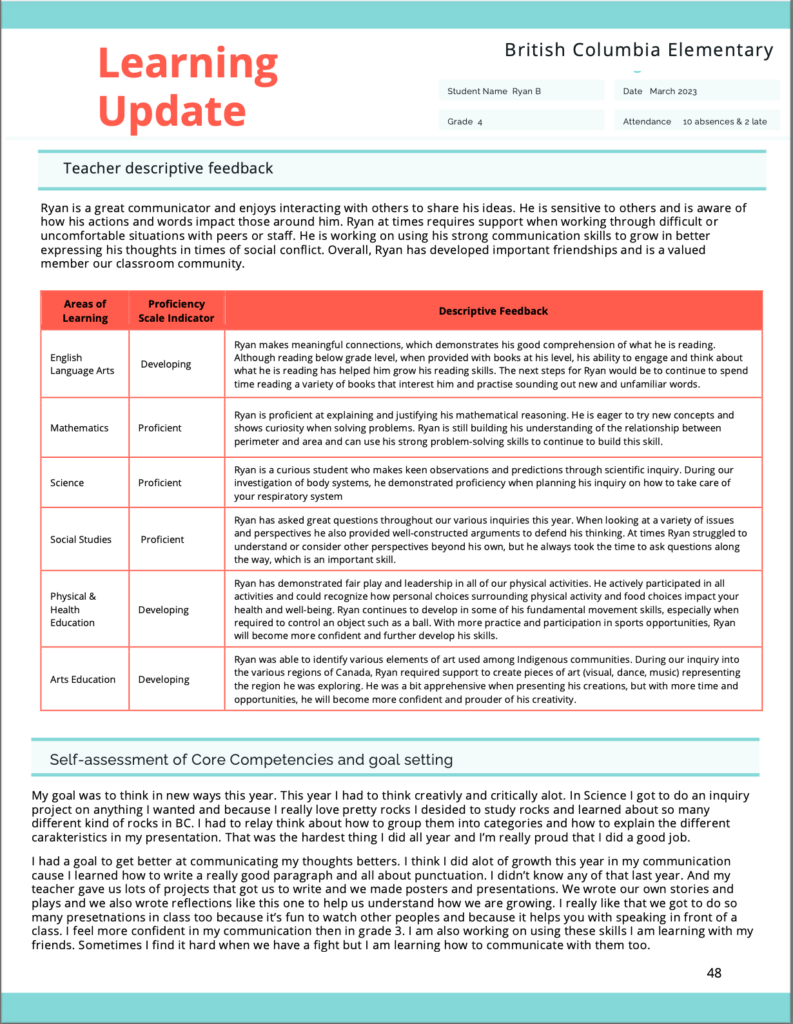

Leave a Reply
You must be logged in to post a comment.